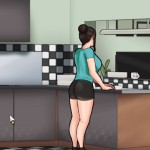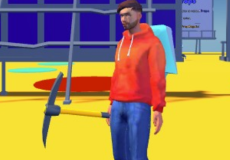
Slide in the Woods
Advertisement
Slide In The Woods begins in a quiet playground surrounded by trees. The player encounters a single slide that becomes the focal point of the experience. The game invites you to interact with it, and each time you use the slide, the surroundings change in subtle ways. What begins as a simple environment gradually becomes a sequence of transitions between familiar space and unknown territory. The structure is minimal, but every repetition brings new elements that transform understanding of what the slide represents.
Advertisement
Similiar games
Slide In The Woods begins in a quiet playground surrounded by trees. The player encounters a single slide that becomes the focal point of the experience. The game invites you to interact with it, and each time you use the slide, the surroundings change in subtle ways. What begins as a simple environment gradually becomes a sequence of transitions between familiar space and unknown territory. The structure is minimal, but every repetition brings new elements that transform understanding of what the slide represents.
Setting And Progression
The game relies entirely on environmental storytelling. There are no dialogues, instructions, or visible characters beyond the player’s perspective. Each descent through the slide alters time and setting, moving from daylight to fog and then to complete darkness. The location changes but remains connected by the same physical structure.
Core progression includes:
- Approaching and using the slide repeatedly.
- Discovering new environmental changes after each use.
- Finding notes and objects that reveal fragments of context.
- Entering an underground space where the environment shifts from open forest to narrow corridors.
The repetition functions as both mechanic and narrative device, pushing the player to continue sliding even as uncertainty grows.
Gameplay And Mechanics
Slide In The Woods uses simple first-person controls and minimal interaction. Movement is handled through standard directional input, with the slide acting as the only direct point of action. The design focuses on looping transitions and environmental transformation. Each time you slide, time passes differently. A fog covers the forest, a flashlight appears, and eventually, the slide becomes an entrance to a darker space.
The structure of the game can be summarized as follows:
- Exploration of a single location that evolves with each cycle.
- Use of repeated motion to progress the story.
- Collection of small narrative clues through scattered notes.
- Gradual reveal of the setting’s true nature through visual change rather than exposition.
The game ends once the player discovers the source of the transformation and escapes, completing the loop.
Themes And Interpretation
Slide In The Woods examines repetition, transition, and the passage of time. The playground acts as a fixed point, while the slide represents the act of moving between states. The player’s role is passive but necessary—the only way to progress is to participate in the cycle. The shift from open forest to confined underground space mirrors the movement from innocence to confrontation. Nothing in the environment explicitly explains itself; understanding emerges through observation. The game relies on consistency and gradual transformation to create meaning rather than using dialogue or narration.
Discuss Slide in the Woods


















